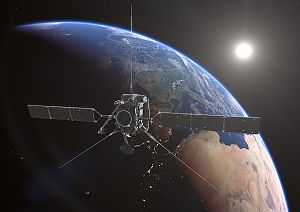"Solar Orbiters' last visit home a success

During the rendezvous, the probe controlled from the Esa control centre in Darmstadt was temporarily out of contact with the experts from the European Space Agency, as planned. At around 8.40 a.m., contact was made again with the orbiter, said Simon Plum, head of ESA mission operations at the control centre in Darmstadt.
Risk from space debris
The manoeuvre carried a small risk, according to ESA. The probe had to fly through two orbits where space debris could have become a hazard. But according to Plum, the risk of collision was minimal. In the event of a potential danger, the specialists could have flown an evasive manoeuvre up to six hours before the approach. But this was not necessary and the orbiter was on its way back into deep space, Plum said on Saturday.
The background to the probe's first and last approach to Earth is to slow the orbiter on its way to its solar mission. It came close to the Earth at almost 29 kilometres per second and slowed down by about seven kilometres per second.
After the flyby, all instruments on board are now to be put into operation together in the coming weeks. In March, "Solar Orbiter" will then fly up to 50 million kilometres close to the centre of the solar system. "It has never been this close before," said Plum. That will be only a third of the distance between the Earth and the Sun. Then, he said, there will also be the next pictures.
The mission of ESA and the US space agency NASA, which cost around 1.5 billion euros, was launched in February 2020 from Cape Canaveral in the US state of Florida. Ten scientific instruments are on board the 1.8 tonne orbiter. Researchers hope to gain new insights into the sun and its magnetic field.
